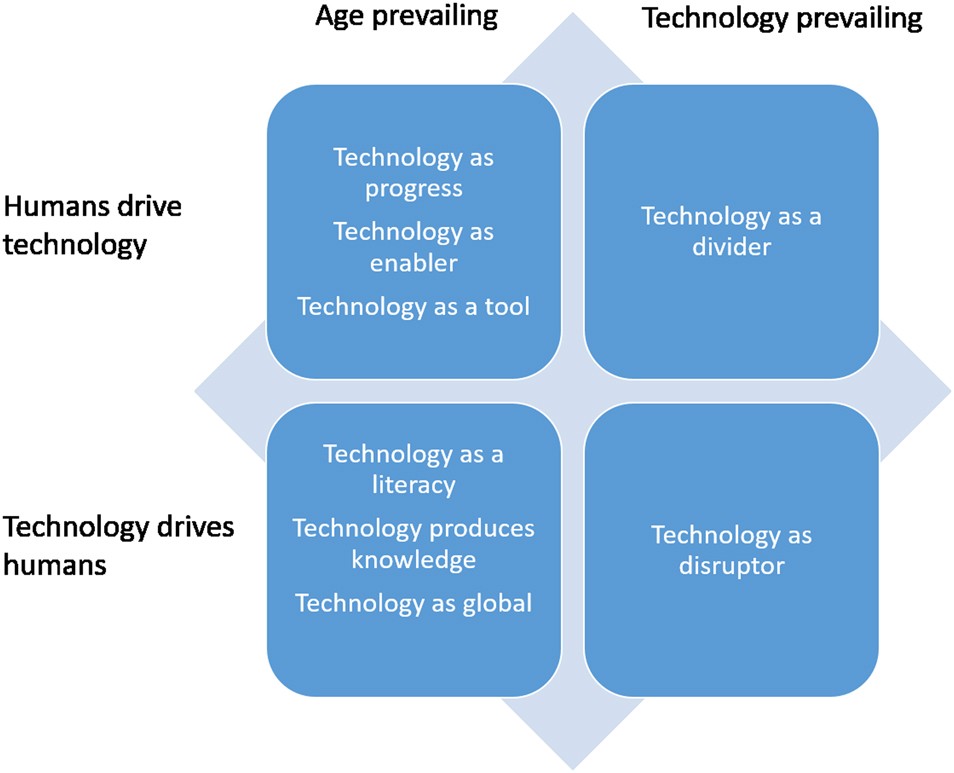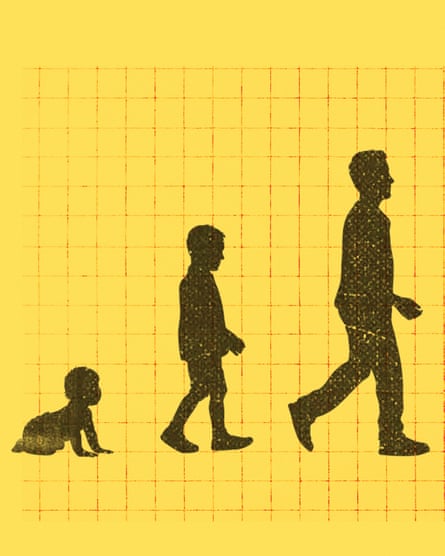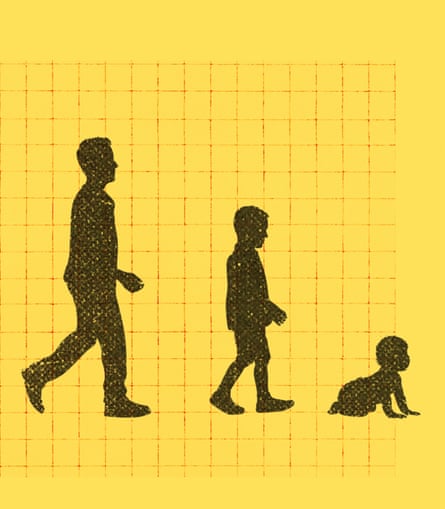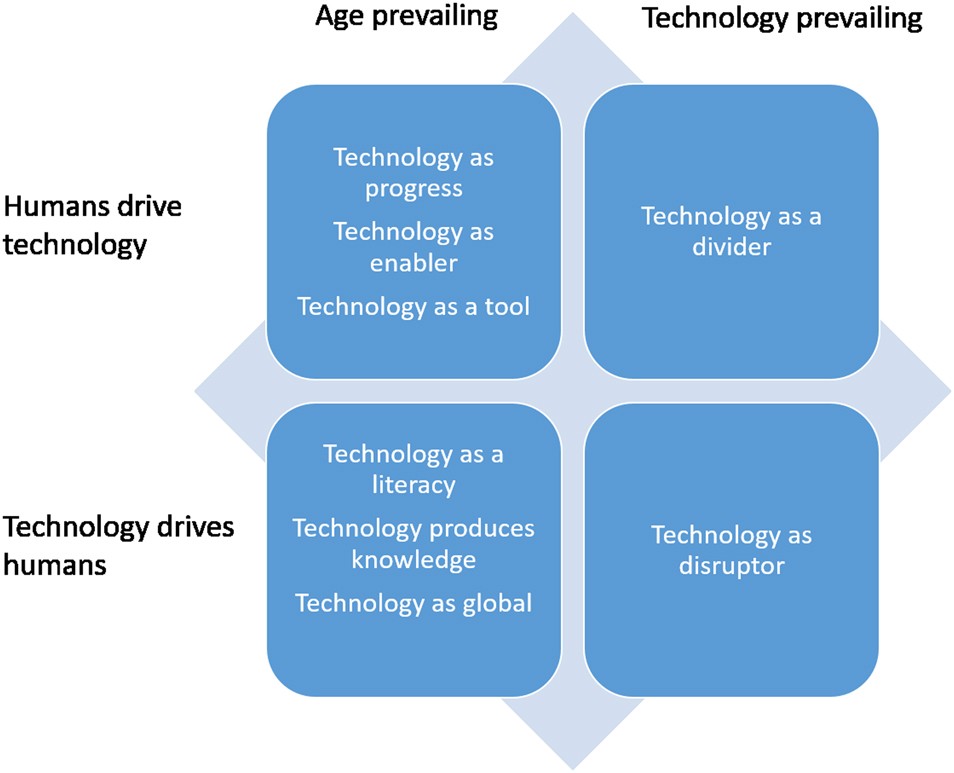
Imagine you find yourself at the helm of one of the globe’s most formidable nations. You possess everything one could desire: authority, sway, wealth. However, the issue lies in the transitory nature of your reign. I’m not referring to the fear of a coup, a revolution, or even a democratic vote: I’m addressing something more inevitable than taxes. I’m talking about mortality.
Recently, Xi Jinping of China and Vladimir Putin of Russia were overheard discussing methods to maintain youthfulness. “Advancements in biotechnology allow for the continuous transplantation of human organs, enabling people to live younger and potentially attain immortality,” Putin remarked through an interpreter to Xi. “There is a possibility,” he added, “of reaching the age of 150 [years].” But is this even feasible, and what would the implications be for our world if the powerful could live eternally?
Over the ages, we have employed increasingly advanced technology to heal ourselves and extend our lifespans. The innovations in public health and medicine during the 20th century enabled children today to enjoy longer, healthier lives than ever before. Yet, for some, that remains insufficient.
With 25 years as a technology journalist, I have tracked the emergence of the web since its inception. I have reported on its transformation of our social dynamics, and I’ve criticized developers who relentlessly pursue disruptive innovations that clash with society. My curiosity grew about a rising group of billionaire investors from Silicon Valley who aspire to live eternally. What kind of world are they envisioning and creating, and where do the rest of us fit within it? I’ve encountered individuals attempting radical life-extension experiments and biohackers who steadfastly believe that numbers will keep them youthful, and I’ve peered into Silicon Valley laboratories where technologists are orchestrating a longevity revolution. I uncovered the motivations, ethical dilemmas, and principles fueling the conviction that we stand on the brink of eternal life, believing that these immortalists are our salvation.
This movement encompasses various interpretations of immortality. The literal interpretation—living forever—is mainly held by highly intelligent, mathematically inclined computer scientists, philosophers, and enthusiasts who have an unwavering faith in the life-giving potential of technology. They envision merging with artificial intelligence, transcending humanity, and living eternally in a realm of joy.
Among the immortalists are those who wish to reshape the global infrastructure, enabling them to achieve forever life. In plain sight, they are reconfiguring sovereign nation-states, advocating for technological acceleration regardless of the consequences. These influential individuals aren’t searching for the fountain of youth—they are constructing it.
Another perspective on immortality is echoed by figures like Xi and Putin, who have faith in the inevitability of exponentially advancing science and technology. They believe life will continue not through merging with technology but via its application to slow the relentless passage of time, facilitating medical advancements that will heal us. They perceive themselves as living evidence of age reversal, physical rejuvenation, and time suspension.
Imagine aging. What images does that conjure? For many, it signals a decline in faculties and abilities. Aging is a universal experience, manifesting differently in each individual. In 2015, the World Health Organization, in its World Report on Ageing and Health, defined healthy aging as “the process of developing and sustaining the functional capacity that underpins wellbeing in later life.” The essence of this definition lies in functional ability or “intrinsic capacity”—the health-related characteristics that enable individuals to pursue what they hold dear.
What you wish to do at 80 is not necessarily what you desired at 20, nor do you wish to engage in the same activities as others. For instance, if you aim to skydive at 80 but cannot manage to board the plane due to difficulties with climbing stairs, your functional ability has decreased. If you’re 80 and face no issues getting onto the plane, but suffer from cataracts and prefer reading over parachuting, your functional ability has still waned. Thus, it’s not merely the presence, relative encroachment, or absence of illness, or even the sheer number of years lived that matters, but the quality and quantity of those years in conjunction with various other aspects, such as lifestyle.

The concept referred to in age research is “healthspan” – with the goal in most modern science in this area focused on extending it. Healthspan signifies prolonged health, retaining ailments of later years at bay. It encompasses maintaining youthfulness, intervening in aging processes, and the concept of “rejuvenation.”
This is where “acceptable” science hesitates: “the fringe of the fringe,” a doctor colleague dismissed my interest in this topic. However, a growing volume of evidence suggests that there could be biological underpinnings to our aging process—and some unconventional researchers, backed by Silicon Valley, are striving to discover how to manipulate this for our bodies to actually reverse aging.
The journey began in the 1990s when a young molecular biologist named Cynthia Kenyon, along with her postgraduate student Ramon Tabtiang, conducted several pivotal experiments using a minuscule nematode known as C. elegans. Their discoveries indicated that modifying a single gene doubled the lifespans of these organisms.
Kenyon delivered a lecture at Stanford University shortly thereafter. “She appeared as a fabulously youthful, avant-garde professor,” recalls Irina Conboy, who was present with her then-boyfriend Mike, both of whom were PhD students at that time. “She proposed that merely adjusting the intensity of specific molecules could rejuvenate an aged animal.”
When I meet Irina and Mike Conboy in their office – now married, they both serve as professors in the bioengineering department at the University of California, Berkeley – they sport matching tie-dye sweatshirts while finishing one another’s sentences. They are affable, warm, and somewhat chaotic. Their small white dog comfortably gnaws on his leg on a saggy sofa, accompanied by an assortment of papers.
The couple has one major inquiry regarding aging: “Why is it that all the body’s tissues seem to age collectively?” Mike inquires. “It doesn’t matter if they’re external or internal or whether they are active or passive; everything seems to deteriorate with age.” They pondered whether some signaling mechanism within the body was altering the molecular architecture of muscles, causing them to age simultaneously. They embarked on a quest to discover what all tissues share in common.
Recall your school biology lessons, and you might remember those detailed anatomy posters showcasing illustrations with labels for each anatomical structure: the skeletal system – the framework of bones, ligaments, cartilage, and joints providing us shape; the nervous system – the network that conveys electrical signals between the brain and the rest of the body; and the vascular system – the blood-vessel systems that deliver nutrients and oxygen to our muscles. Could an aging alert have been transmitted throughout the body via one of these systems?
“An ideal experiment would be, ‘What if we transplanted a young nervous system into an old mouse?’” says Mike. “Unfortunately, that’s not technically feasible. What if we introduced a young vascular system to an old mouse? That’s also not possible.”
Irina glances at me with a gleam in her eye as Mike continues. “What if we transfused young blood into an old mouse?” This would require more than a single injection—they would need to transfuse a significant amount of blood from a young mouse to an old one to observe a noticeable effect.
“What if we connected the young mouse and the old mouse together? You can physically attach an old mouse to a young one, and instead of the skin of the old mouse healing edge to edge, it unites across the edges to the young one,” Mike details, describing a technique known as parabiosis. “As that tissue repairs itself, new blood vessels form. Now there would be a continuous blood exchange between the two mice.”
Between 2003 and 2004, they connected three sets of mice: young and old, young and young, and old and old. They permitted blood circulation for five weeks and subsequently inflicted an injury on each mouse’s hind leg muscle. Five days later, those with the young blood — including the elder ones — showed “robust” recovery, unlike the unaided older ones, whose muscles healed “typical of aged animals.”
The team repeated the tests on different body areas. The liver yielded similar outcomes. The brain, likewise. As results continued to emerge throughout the life spans of the joined mice, the Conboys could conclusively state that the old mouse tissues mirrored those of a young mouse—irrespective of whether in muscles, liver, or brain. Something within the young blood revitalized the aging tissues. In 2005, they revealed their findings in Nature.
The Conboys had stumbled upon a figurative fountain of youth, but they lacked understanding of the mechanism at play.
Scientific knowledge unfolds as a continuous journey rather than a mere moment in time. The pathway to today is muddled with outdated, disproven notions that, perhaps, served as the stepping stones to our current position. The quest for longevity shares this characteristic.
In 1889, Charles-Édouard Brown-Séquard, a renowned physiologist and member of the Royal Society, presented before a distinguished assembly at the Société de Biologie in Paris. At the age of 72, feeling the weight of aging, Brown-Séquard began to explore the decline in sexual function and asserted that he had discovered an effective remedy: injections into both arms of a concoction derived from the gonads, semen, and “juice taken from a testicle” of either a dog or a guinea pig.
His presentation was met with stunned silence. Prior research had suggested something unidentified in the sexual organs could alleviate aging effects (at least in men). Following his treatment, Brown-Séquard claimed enhanced energy, rejuvenated muscles, improved cognitive function, and improved performance in intimate situations. Unfortunately, it turned out to be essentially a powerful placebo effect.
However, one of Brown-Séquard’s students, Serge “Samuel” Voronoff, who had been educated under the influential eugenicist Alexis Carrel, a Nobel laureate and pioneer in organ transplants, seized upon his mentor’s two groundbreaking ideas—transplanting organs between bodies and the mysterious reviving potential of testicles—and pursued his theory of rejuvenation: he transplanted young sex glands into older individuals. Specifically, he grafted pieces of monkey testicles into older men’s scrotums. In 1923, he presented his findings to scientists at the International Congress of Surgeons in London, claiming that his approach had achieved such success that the Pasteur Institute built him a chimpanzee-breeding facility in West Africa.
Within twenty years, over 45 surgeons internationally replicated his method more than 2,000 times, with 500 operations conducted in France alone. Voronoff released books and papers, confidently proclaiming that lifespan could exceed 140 years. The media hailed the results as miraculous and transformative. In Brazil, where he achieved a level of celebrity, Voronoff inspired carnival songs. However, his fame faded when it was revealed that his methods were less effective than the previously enigmatic active agent: testosterone, isolated by Ernst Laqueur in 1935.
Both men, respected and knowledgeable, had tugged at strands of scientific inquiry that seemed reasonable. Yet both ultimately missed the mark. At that time, rigorous regulations for ensuring the safety and efficacy of proposed treatments had yet to be established. Today, similar treatments have been developed, and young blood is orbiting it.
In 2016, Jesse Karmazin, a graduate of Stanford Medical School, launched Ambrosia Health in a business park adjacent to a redwood forest in Monterey, California, aiming to test the Conboys’ hypothesis in humans. At that point, little was known about why young blood appeared to reverse aging—over the decade since their parabiosis research, only a handful of molecular and hormonal candidates had emerged, with inconclusive evidence, all resting on mouse studies.
Karmazin initiated a human trial through his private firm, charging those over 35 a fee of $8,000 to measure their biomarkers, undergo a transfusion of one liter of plasma from a donor aged 16 to 25, and have their biomarkers re-evaluated for comparison.
He contacted Irina Conboy to gauge her thoughts; she declined to participate, believing the premise of Karmazin’s study didn’t align well. There wasn’t sufficient evidence to suggest that positive outcomes would translate so broadly. Nonetheless, despite her lack of endorsement, the company and trial garnered over 100 media mentions within two years.
Jesselyn Cook, a tech reporter for the Huffington Post at the time, remarked, “Karmazin made statements asserting, ‘It works, it reverses aging,’ and ‘I’m not suggesting this guarantees immortality, but it’s quite close.’ It seemed irrelevant whether someone was young, aiming for enhanced capabilities, or old, attempting to, as he put it, reverse aging,” Cook relayed. “Ambrosia appeared equipped to assist with any issue.”
By 2019, Ambrosia Health had expanded to five locations across the U.S., and Karmazin hinted at plans for another clinic in Manhattan. Other private facilities also emerged, claiming to conduct research studies while offering clients transfusions of young blood. However, the FDA had never sanctioned young plasma treatments for mitigating physical and cognitive aging, issuing a statement in February citing concerns that patients were being “exploited” by “unscrupulous individuals” promoting these treatments as “cures and solutions.” Ambrosia Health vanished within hours of the announcement.
In 2023, when I corresponded with Karmazin, he stated, “The FDA never evaluated our data prior to their announcement … I doubt they were even aware of Ambrosia; it’s highly likely they were referencing our competitors, who displayed less diligence and regard for regulations.”
“If you think you can simply undergo the procedure and emerge younger—that’s not the case yet,” Irina Conboy responded when I mentioned Ambrosia Health’s story. “Currently, we don’t have the means to halt aging and stabilize, much less gradually reverse it. But with proper investment of time, effort, and resources, it is my belief that we will achieve this soon.”
The notion of “soon” is precisely what numerous longevity advocates are pinning their hopes on.
When I interviewed “rejuvenation athlete” Bryan Johnson in 2023, he was 45 years old. This biohacker and tech entrepreneur had adopted his Blueprint algorithm to “reverse” time through a stringent regimen of supplements, diet, and exercise, aiming to lower his “biological” age considerably beneath his “chronological” age. He had also experimented briefly with young plasma therapy; his teenage son, Talmadge, was what Johnson termed his “blood boy” for a short period while Johnson’s medical team evaluated the potential benefits of this treatment. Johnson ultimately ceased this therapy with his son, yet continues to tweet about visiting the clinic every few months to obtain several liters of albumin—the protein found in plasma—as if it were a routine longevity oil change.
On Johnson’s 46th birthday, he reassessed his biological age. During the previous year, his objective was to determine if Blueprint could maintain his biological age. His results indicated success: his body aged at a rate of 277 days for every 365.
Holding back the aging process for a single year might seem inadequate to secure immortality, but consider this: it’s analogous to a rocket launching from Earth. It must achieve a certain speed to overcome gravitational forces, known as escape velocity. Now envision a scenario where you could cease aging through treatments, lifestyle changes, and hope, eventually reaching a stage where any age-related diseases, including dementia or diabetes, and those we haven’t identified, will be resolved before you succumb to them. This escape from mortality could be attainable. This concept—termed longevity escape velocity—doesn’t imply living forever; rather, it signifies not dying today.
Achieving longevity escape velocity hinges on a significant mathematical premise: that technology can keep pace with the diverse decline of human beings. The conditions affecting youth are—medically speaking—comparatively straightforward. However, the maladies of advanced age seem to escalate in severity exponentially. Johnson must remain youthful, or he risks succumbing to an untreated age-related condition. If one aims to reverse aging, residing in a period when treatments and technology progress at an equivalent exponential rate becomes imperative. These individuals are racing against time.
They subscribe to the notion known as Moore’s law—a widely accepted principle suggesting that every 18 months, computer technology doubles in capability. This principle accounts for why modern phones are priced similarly to their predecessors (not accounting for inflation) yet boast double the power.
From MRI scans to drug discovery to protein folding, the medical field is now perceived as a computational challenge; hence, it follows that contemporary medicine should also reflect an exponential amplification of competency. If every 18 months it becomes twice as effective at preserving life, what will medicine look like in two decades? And if you can determine how to defy aging within that timeframe, it elucidates why living to 200 years seems increasingly plausible.
Technofundamentalists maintain that the continuously advancing technology ought to be capable of addressing the increasingly intricate challenges we present. Therefore, if the body can be quantified as data and we can discern how to rectify it when mishaps occur, why aren’t we already living eternally? Life—mortality—is intricate.
 View image in fullscree
View image in fullscreeIn his 2024 publication Why We Die, Nobel laureate Venki Ramakrishnan discusses “the inherent arrogance displayed by many physicists and computer scientists toward biologists,” leading the engineers to overlook something essential. This missing piece may be tangible, yet it’s more likely to be something that resists division into data. Seamus O’Mahony, a physician and award-winning author of The Way We Die Now, experienced this at a longevity conference in 2025. “They focus solely on the biomolecular and remunerative,” he states. “I heard plenty over the course of four days regarding AI-crafted medications, glycans, and the transcriptome aging clock, yet almost nothing about the complexities surrounding death systems and the social factors affecting dying. They seemed curiously uncurious about the adversary they claim to be battling. Aging, to them, is merely a technical challenge that can—and will—be resolved.”
Ironically, the mechanistic metaphor that has served us well is now significantly hindering further advancements. Excessive fidelity to data and engineering disregards the significance of the unknown and the unknowable. To conquer aging and death, we must acknowledge the very technical instruments designed to assist us—from spreadsheets to large language models. We must adopt a more machine-like approach. “This drive, this motivation, this ethical obligation to enhance oneself implies we should become machine-like,” asserts Dr. Elke Schwarz, political theorist at Queen Mary University of London.
However, “we live an inconvenient life,” remarks Schwartz. “We are peculiar. We are chaotic. Our bodies are finite. We die. Why can’t we embody the characteristics of products? Why can’t we mirror the artifacts that computer scientists create that are subject to refinement and enhancement?” Because we cannot. Yet, this serves as a starting point for how Silicon Valley intends to “repair” mortality, and their straightforward solutions—and what’s necessary to achieve them—are now priorities for some of the most influential figures in the world.
In 2025, Donald Trump made a return to the Oval Office with ambitious plans to overhaul the U.S. government. Present at his inauguration were representatives from the largest tech companies globally, each of whom has supported America’s AI future with their influence and resources from Silicon Valley.
Following January 2025, Trump has allowed these entities access to financial resources and infrastructure that will assure AI becomes the engine driving the U.S. economy; this will also hasten the technological quest for eternal existence. They deem it a moral imperative to use technology to enhance both body and mind towards immortality.
Regulation hinders their progress, and regulation is precisely what Trump’s administration is dismantling. In early 2025, actions taken by Elon Musk’s Doge profoundly impacted research at the National Institutes of Health (NIH) and oversight from the FDA. The department cancelled leases, reduced the workforce in the FDA’s Office of Digital Transformation, and terminated hundreds of high-value research initiatives.
Techno-libertarian Peter Thiel, a longevity investor and co-founder of PayPal, facilitated the placement of former associates and staffers in positions capable of aiding the dismantling of governmental regulation. The acting director of the Centers for Disease Control and Prevention—until recently RFK Jr’s right-hand man—is Jim O’Neill, a longtime ally of Thiel who in 2014 proposed reforms to the FDA “to enable it to approve medications once sponsors demonstrate their safety—allowing public usage at their own risk, but with minimal safety concerns,” which could involve unverified longevity therapies employing “young blood.”
The high price of prioritizing the technofundamentalist aspiration for AI immortality has resulted in the diversion of resources from initiatives aimed at supporting the elderly populace today. The administration has suggested reductions totaling hundreds of billions of dollars to Medicare—the social support system for healthcare covering millions of Americans aged 65 and older—and has canceled the White House Conference on Aging, an essential event held every decade since 1961 to set strategic directions for older American policy.
Truly, all of this radical technological and governance evolution will not contribute to the longevity of the broader population.
It’s straightforward to scoff at figures like Xi and Putin, who yearn for eternal life, dismissing their grandiose fantasies. They are convinced that humanity is on the verge of dramatically prolonged existence, and they, uniquely in history, are the catalysts to construct the machinery that will achieve this.
However, consider this: those technologists deeply embedded in the immortality initiative—whether they aspire to literally live eternally or develop AI anticipated to usher in a new enlightenment—are experiencing unmatched political access to global leaders, and they are once again shaping our future.
For the immortalists within Silicon Valley and elite figures like Xi and Putin, death isn’t viewed as an unavoidable facet of life. Although the concept of organ transplantation for everlasting life might belong to science fiction, they possess an advantage in the race to longevity escape velocity, given their capacity to afford state-of-the-art methods, customized strategies, and as much young blood as they can ethically justify. They’re capable of persisting: as power brokers, global leaders, or bits of digital code that transcend throughout the universe. Yet as they reshape the world according to their vision, they endorse the illusion that humans are as uncomplicated as computer programs. These notions are laying the foundation for a future of eternal existence. Yet we retain the choice to either accept them or to exist fully in the present.

